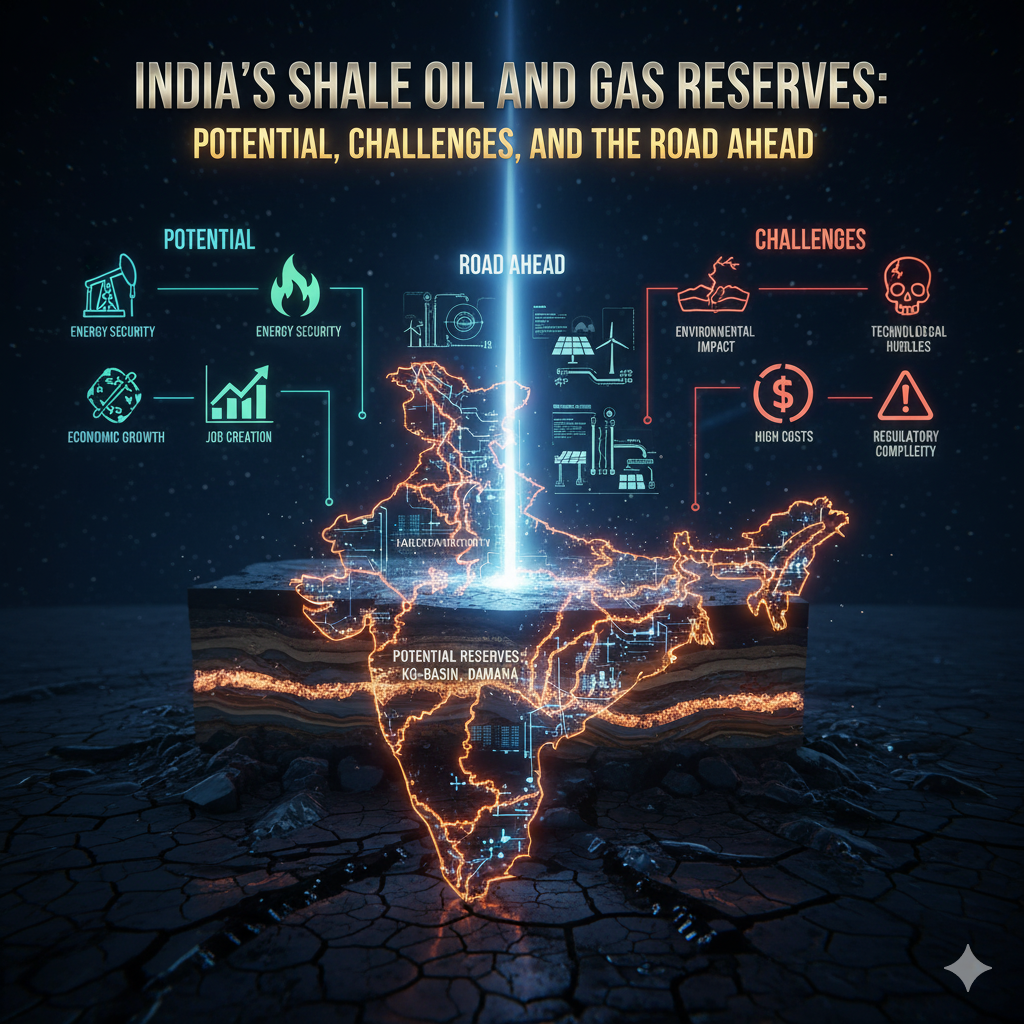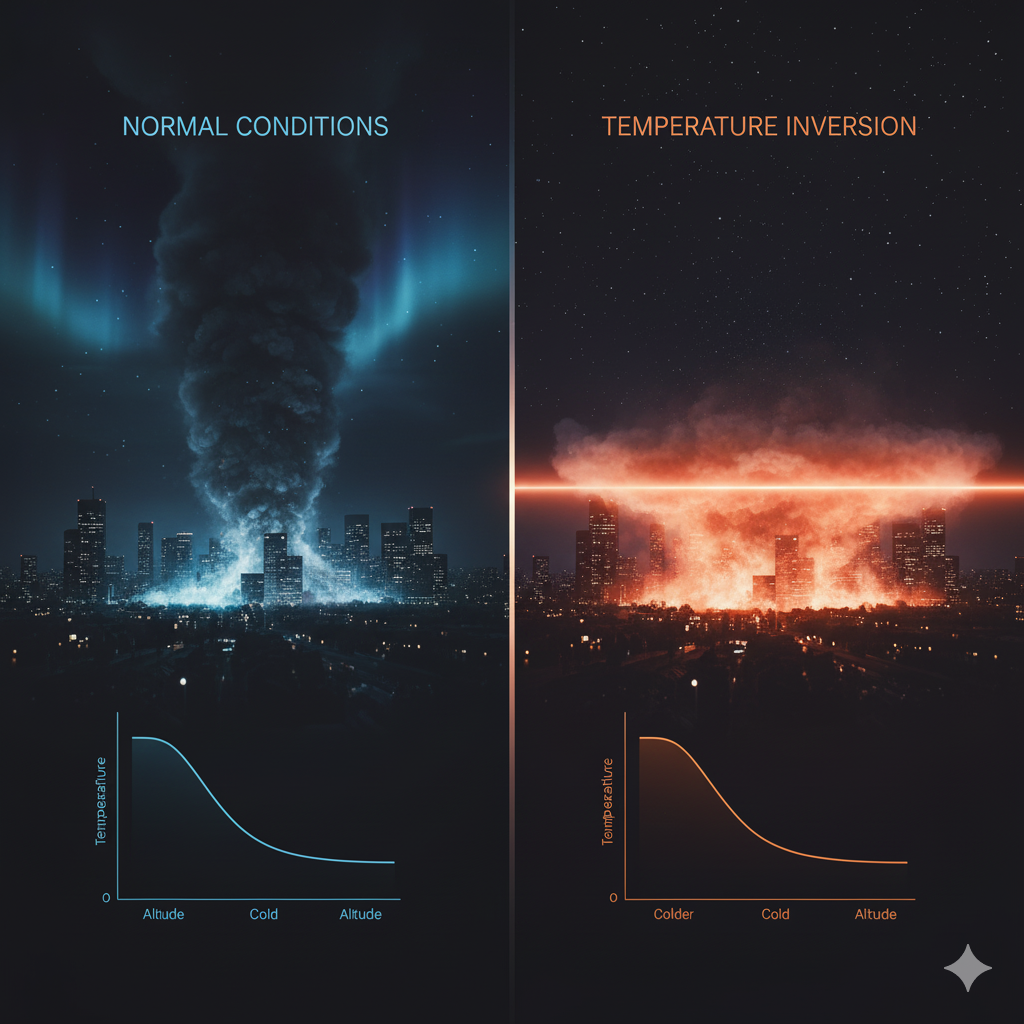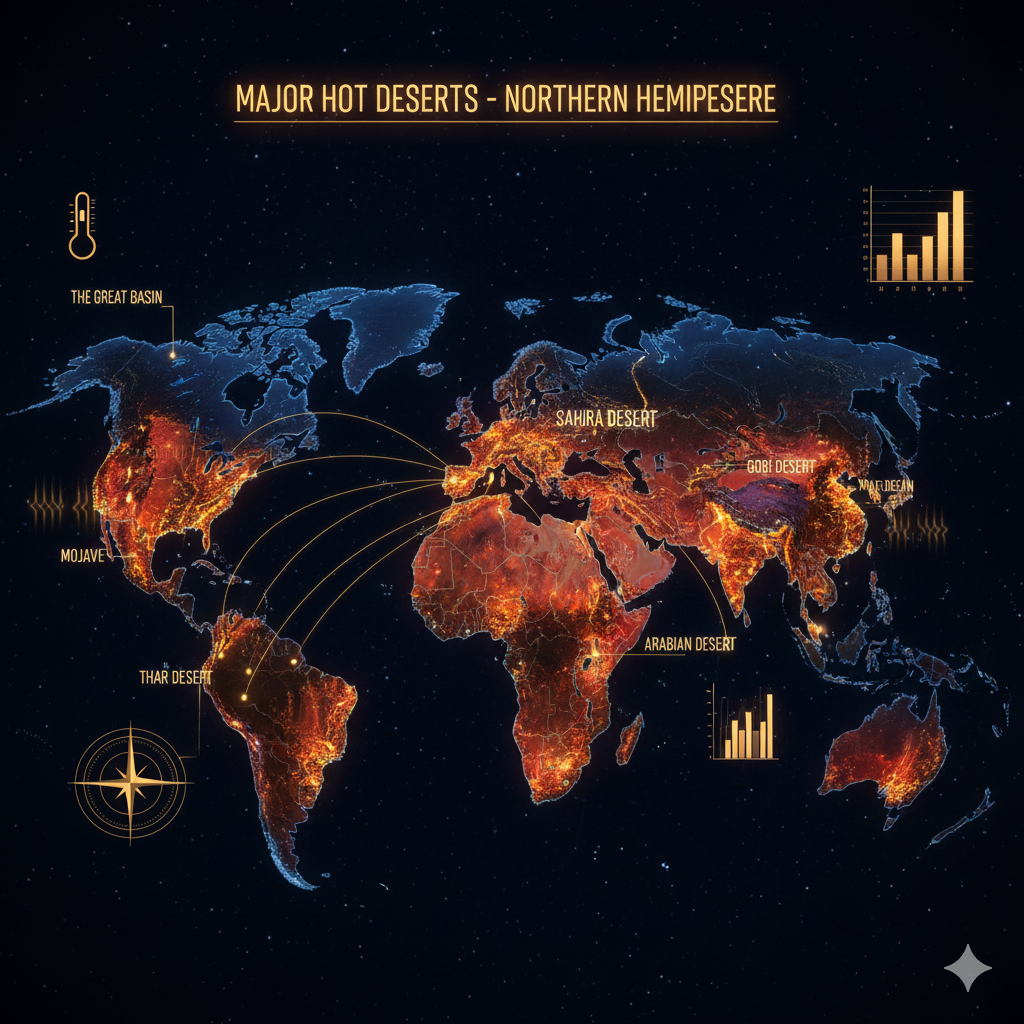Introduction
Urbanization is one of the most powerful and transformative processes shaping the Earth’s surface today. While cities are engines of economic growth and human development, they also profoundly alter the natural environment. Among the most significant and widely studied environmental impacts of urbanization is the Urban Heat Island (UHI) phenomenon—a condition where urban areas experience higher temperatures than their surrounding rural regions.
This temperature difference, often ranging from 1°C to 7°C or more, is primarily a result of human activities, modification of land surfaces, and concentration of artificial structures that trap and re-radiate heat. The UHI effect not only affects local climate patterns but also has serious implications for energy consumption, human health, air quality, and ecological balance.
This essay critically examines the causes for the formation of urban heat islands, explores their scientific mechanisms, and highlights how human-induced changes in urban environments have intensified this phenomenon globally.
1. Understanding the Urban Heat Island Phenomenon
1.1 Definition
An Urban Heat Island (UHI) is a metropolitan area that is significantly warmer than its surrounding rural areas due to anthropogenic (human-caused) modifications of land surfaces and microclimatic conditions.
According to the United States Environmental Protection Agency (EPA), the UHI effect occurs when “cities replace natural land cover with dense concentrations of pavement, buildings, and other surfaces that absorb and retain heat.”
1.2 Historical Context
The concept was first identified by Luke Howard in London (1818), who observed that city temperatures were consistently higher than nearby countryside areas. Since then, UHIs have been documented in almost all major cities—New York, Tokyo, Delhi, Beijing, and São Paulo—demonstrating that it is a global urban environmental issue.
1.3 Types of Urban Heat Islands
- Surface UHI: Refers to temperature differences between urban and rural land surfaces, influenced by the thermal properties of materials.
- Atmospheric UHI: Concerns temperature variations in the lower atmosphere above cities, often detected by satellite or aircraft sensors.
- Canopy Layer UHI: Found near the ground level where people live and interact—most directly affecting human comfort and energy demand.
2. Scientific Basis of Heat Island Formation
The urban heat island effect arises from complex interactions between radiation, conduction, convection, and anthropogenic heat emissions within an urban microclimate. Key physical principles include:
- Energy Balance Alteration: Urban surfaces absorb more solar radiation and emit longwave radiation less efficiently than vegetated surfaces.
- Low Albedo and High Thermal Capacity: Concrete and asphalt retain heat during the day and release it slowly at night, maintaining higher nighttime temperatures.
- Reduced Evapotranspiration: The replacement of vegetation limits cooling through evaporation, intensifying surface and air temperature.
3. Major Causes of Urban Heat Island Formation
The formation of urban heat islands is primarily due to human alteration of land surfaces and energy-intensive activities. The following sections explain these causes in detail.
3.1 Modification of Land Surface and Vegetation Loss
a. Replacement of Natural Surfaces
In urban development, natural landscapes—such as forests, wetlands, and grasslands—are replaced with impervious surfaces like roads, parking lots, rooftops, and pavements.
These materials have:
- Low albedo (they absorb more sunlight),
- High heat capacity (they store more heat), and
- Poor moisture retention, which reduces natural cooling.
As a result, urban areas absorb vast amounts of solar radiation during the day and slowly release it at night, maintaining elevated temperatures.
b. Decline in Evapotranspiration
Vegetation plays a crucial role in cooling the air through evapotranspiration—the combined process of evaporation from soil and transpiration from plants.
Urbanization leads to loss of green cover, reducing this natural cooling effect and increasing surface temperature.
For instance, cities like Delhi, Beijing, and Los Angeles have reported a sharp decline in vegetation cover, correlating with rising UHI intensities.
3.2 Characteristics of Urban Materials
Urban construction materials such as concrete, steel, brick, and asphalt contribute significantly to UHI formation due to their thermal properties.
- High Heat Storage: These materials can store large quantities of heat during the day and release it at night.
- Low Reflectivity (Albedo): Dark surfaces like asphalt absorb up to 95% of incoming solar radiation.
- Low Emissivity: Some surfaces release absorbed heat slowly, maintaining warm nighttime conditions.
In contrast, natural surfaces like soil or vegetation reflect more sunlight and allow cooling through evaporation.
3.3 Urban Geometry and “Canyon Effect”
The design and layout of buildings in urban areas greatly influence temperature and airflow.
a. Reduced Air Circulation
Tall buildings and narrow streets form urban canyons, which trap heat and restrict the flow of cooling breezes. This limits convective heat dissipation and leads to heat accumulation within city cores.
b. Multiple Reflection of Radiation
In dense urban zones, solar radiation reflects multiple times between buildings before being absorbed, thereby increasing the net heat retention in the area.
c. Nighttime Heat Retention
The complex structure of cities reduces longwave radiation loss at night. The trapped heat keeps nighttime temperatures higher in urban centers than in rural surroundings.
3.4 Anthropogenic Heat Emissions
Urban environments are centers of intense energy consumption from transportation, industries, and domestic activities.
a. Transport and Vehicles
Vehicles emit large amounts of waste heat through fuel combustion. The dense traffic in metropolitan areas like Tokyo, New York, and Mumbai generates localized hotspots, especially along major roads.
b. Industrial and Commercial Activities
Factories, air conditioners, and heating systems contribute to anthropogenic heat flux, which can reach up to 100–200 W/m² in dense commercial districts.
c. Air Conditioning Feedback
Ironically, the widespread use of air conditioners to combat heat further intensifies the UHI effect by releasing additional heat into the ambient air.
3.5 Reduction of Water Bodies and Permeable Surfaces
Urbanization often leads to encroachment upon lakes, ponds, and wetlands, which play a crucial role in moderating local temperatures.
- Water bodies act as thermal regulators, absorbing heat during the day and releasing it slowly at night.
- The loss of permeable soil surfaces decreases infiltration and evaporation, thereby diminishing the cooling potential.
For instance, the disappearance of lakes in Bangalore (India) and Beijing (China) has been linked to the strengthening of heat island effects.
3.6 Atmospheric Pollution and Greenhouse Gas Concentration
Urban areas are significant sources of air pollutants such as soot, dust, nitrogen oxides, and greenhouse gases.
- These particles absorb and scatter solar radiation, creating a local “radiative forcing” effect.
- Pollutants form urban smog layers that trap longwave radiation from the Earth’s surface, enhancing the greenhouse effect within city limits.
- The presence of aerosols also alters cloud formation and rainfall patterns, reducing atmospheric cooling.
3.7 Urbanization Patterns and Population Density
Rapid, unplanned urbanization often leads to congested settlements with poor ventilation, lack of open spaces, and excessive built-up areas.
- High population density increases per capita energy use, traffic congestion, and waste heat generation.
- The concentration of human activities in city centers contributes to persistent microclimatic warming.
Cities such as Shanghai, New York, and Mexico City exhibit strong UHIs due to intense urbanization and high population density.
3.8 Geographic and Climatic Factors
The magnitude of the UHI effect varies depending on regional geography and climate.
- Arid regions (e.g., Phoenix, Dubai) experience stronger UHIs because of dry air and limited vegetation.
- Humid tropical cities (e.g., Mumbai, Singapore) have moderated UHIs but experience high humidity, which worsens human discomfort.
- Topography also plays a role: cities in basins or valleys trap warm air more effectively than those in open plains.
4. Case Studies of Urban Heat Islands Across the World
4.1 Tokyo, Japan
Tokyo has one of the most studied UHIs globally. Since the 1950s, the city’s average temperature has risen by nearly 3°C, double the global rate. Major causes include dense construction, industrial emissions, and extensive use of air conditioners. The Japanese government has implemented “Cool Roof” and “Green Tokyo” initiatives to combat the problem.
4.2 New York City, USA
The UHI effect in New York City is evident in both surface and atmospheric layers. Temperatures in Manhattan can be 7°C higher than in nearby rural areas. The city has responded with urban greening, reflective roofing materials, and tree-planting programs.
4.3 Delhi, India
Delhi has witnessed an increase in average summer temperatures of over 4°C in recent decades. Causes include high vehicle emissions, concretization, loss of green cover, and groundwater depletion. The Yamuna floodplain—once a natural cooling buffer—has been heavily encroached upon, worsening heat accumulation.
4.4 Beijing, China
Rapid industrialization and expansion of built-up areas have made Beijing’s urban core up to 6°C warmer than surrounding rural districts. Satellite imagery shows a strong correlation between building density and surface temperature.
5. Consequences of Urban Heat Islands
While this essay focuses on causes, understanding consequences adds context to their significance:
- Increased Energy Demand: More cooling requirements lead to higher electricity consumption.
- Health Impacts: Greater risk of heat strokes, dehydration, and cardiovascular diseases.
- Air Pollution Worsening: Heat accelerates photochemical reactions, increasing smog formation.
- Altered Rainfall Patterns: UHIs may increase convective rainfall in cities.
- Ecosystem Stress: Local flora and fauna experience habitat changes due to heat and dryness.
6. Mitigation Approaches (Brief Overview)
Although mitigation is not the main focus, it’s useful to note that causes of UHIs can be addressed through targeted interventions such as:
- Expanding urban green cover and green roofs.
- Promoting cool pavements and high-albedo materials.
- Conserving urban water bodies.
- Designing ventilated city layouts to enhance airflow.
- Encouraging sustainable urban planning and public transportation to reduce emissions.
7. Critical Evaluation: Interconnected Causes
The formation of heat islands is multifactorial, with synergistic interactions among various causes. For example:
- Loss of vegetation amplifies the effects of impervious surfaces, while air pollution further traps heat generated by human activities.
- Socioeconomic factors, such as rising urban income levels, increase energy-intensive lifestyles, further contributing to heat emissions.
- The feedback loop between temperature rise and air conditioner use exemplifies how urban systems can self-intensify heat accumulation.
Therefore, tackling the UHI phenomenon requires a systems approach, integrating urban planning, environmental management, and climate adaptation strategies.
8. Global Trends and Future Outlook
With more than 55% of the world’s population now living in cities, and projections estimating this figure to reach 68% by 2050, the UHI phenomenon is expected to intensify.
Climate change further compounds the problem by raising baseline temperatures, making cities even more vulnerable to extreme heat events.
Research by NASA and IPCC shows that by 2050, many megacities could experience average UHI intensities exceeding 8°C, especially in tropical and subtropical regions. Therefore, understanding and addressing the causes of UHIs is crucial for urban resilience and climate adaptation.
Conclusion
The formation of Urban Heat Islands is a direct manifestation of the way human beings have transformed natural landscapes into dense, heat-absorbing built environments.
The causes—ranging from land surface modification, vegetation loss, industrial heat emissions, to urban geometry and pollution—are deeply intertwined with patterns of urban growth and modern living.
As cities continue to expand, the heat island effect will pose increasing challenges to human health, environmental sustainability, and energy efficiency. Recognizing the root causes and integrating them into urban design, policy frameworks, and climate adaptation strategies is essential to building cooler, greener, and more livable cities.
Ultimately, mitigating UHIs begins with rethinking urbanization—not merely as a symbol of progress but as a system that must coexist harmoniously with nature.




